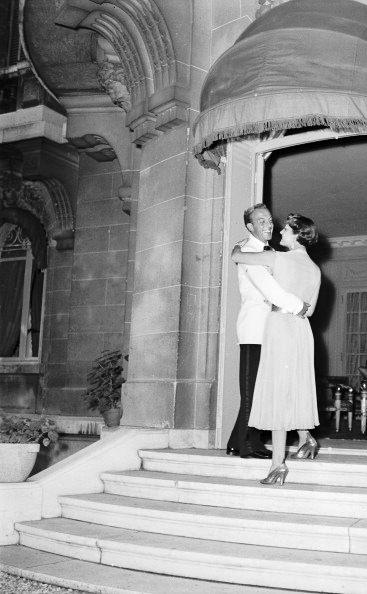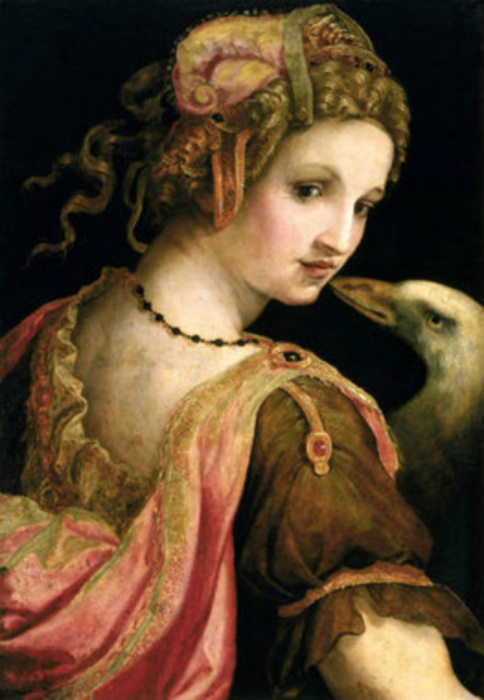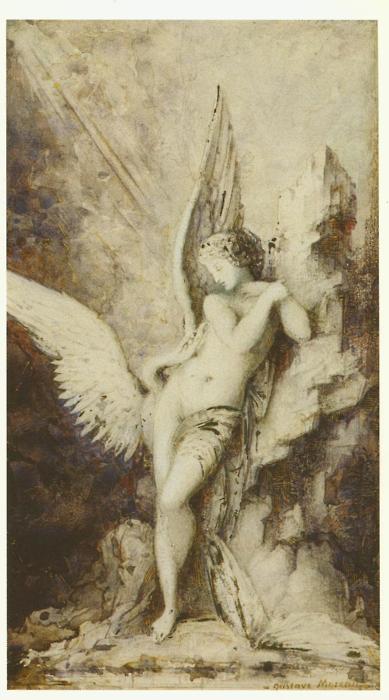 Portrait of Madame de Pompadour, François Boucher, 1759
Portrait of Madame de Pompadour, François Boucher, 1759
Pompadour refers to a hairstyle which is named for Madame de Pompadour (1721-1764), mistress of King Louis XV. Although there are numerous variations of the style for both women and men, the basic concept is hair swept upwards from the face and worn high over the forehead, and sometimes upswept around the sides and back as well.
After its initial popularity among fashionable women in the 18th century, the style was revived as part of the Gibson Girl look in the 1890s and continued to be in vogue until World War I. The style was in vogue for women once again in the 1940s. Variations of the pompadour style continue to be worn by men and women in the 21st century.
 “The Weaker Sex: The young man imagines himself the latest victim of some fair entomologist“, Charles Dana Gibson, 1903
“The Weaker Sex: The young man imagines himself the latest victim of some fair entomologist“, Charles Dana Gibson, 1903
 Portrait of Lady Astor, John Singer Sargent, 1908-1909
Portrait of Lady Astor, John Singer Sargent, 1908-1909
Among women, the hairstyle has become marginally popular again in the first few years of this century. It can be created by ratting at the roots of the hair on the sides of the pompadour towards the top of the head. Then the hair is combed up and over the ratted hair, off the forehead, the front up in a curl straight back, and the sides pulled back towards the center.
 James Dean. Photo: Phil Stern, c. 1955
James Dean. Photo: Phil Stern, c. 1955

Elvis Presley, circa 1956
 Elvis Presley. Photographer unknown, 1957
Elvis Presley. Photographer unknown, 1957
Pompadour style quickly became a stereotypical feature of rebels and nonconformists, and gained popularity especially after the rise of rock ‘n roll legend Elvis Presley, who sported the same look. In recent years the pompadour hair style has been adopted by those enamoured with vintage culture of the late 1950s and early 1960s that includes antique cars, hot rods, American folk music, rockabilly bands, Little Richard, and Elvis , as well as actors such as James Dean and Desi Arnaz.
 Morrissey’s hairdo is inspired by his evergreen idols Elvis and Jimmy Dean
Morrissey’s hairdo is inspired by his evergreen idols Elvis and Jimmy Dean
Nowadays, the pompadour hairstyle is worn on celebrities which include Justin Bieber, Bruno Mars, Macklemore, David Beckham, Zac Efron, Zayn Malik of One Direction, Alex Turner of Arctic Monkeys, Justin Timberlake and many others.

 Geneviève and Jacques Fath. Photos by Nina Leen, 1946
Geneviève and Jacques Fath. Photos by Nina Leen, 1946















































